

SCS Engineers writes blogs to offer suggestions and tips, which we hope will save you money in your short and long-term landfill operations. Here are several popular ones from our landfill series SCS Advice from the Field, along with links to articles and papers with more details.
Landfill Disposal Cell Base Slope Design – – Focuses on the loss of the airspace and lower liquid transmissivity in the geocomposite drainage layer of landfills with steeper slopes. Also, the analytical formulation presented in Dr. Khatami’s publication “Formulation for Optimizing Landfill Base Slopes and Maximizing Airspace,” provides landfill owner/operators with an analytical tool to perform a basic sensitivity analysis in a short period at a very low cost.
Landfill Leachate Collection Pipe, SDR 11 vs. SDR 17 HDPE – – Designing a leachate collection system for a landfill disposal cell involves numerous engineering analyses of different components involved in collecting and conveying leachate. One of the important engineering evaluations is the determination of structural stability of HDPE leachate collection pipes at the bottom of the landfill.
Wastewater Deep Injection Wells For Wastewater Disposal – Industries Tap a Unique Resource – – The increasingly stringent surface water discharge standards are an ongoing challenge for industries generating a wastewater stream. DIWs could be considered as a potentially viable option for long-term, cost-effective wastewater disposal, where a viable receiving geologic strata exists and when wastewater management alternatives are evaluated.
Dynamic Compaction for New Development on Old Landfills – – Dynamic compaction is a proven geotechnical construction engineering method used to improve certain landfill areas to support their redevelopment. A combustible gas barrier layer is generally required below the building footprint to collect subsurface combustible gases. The article “Pursuing Dynamic Compaction,” has more details.
Control Engineering is a publication for automation engineers who design, implement, maintain, and manage control/instrumentation systems, components, and equipment for a wide range of industries and manufacturers. The magazine’s Engineering Leaders Under 40 Program recognizes professionals under the age of 40 who are making a significant contribution as control and plant engineering professionals. Dave Hostetter of SCS Engineers is one of these recognized for his professionalism and contributions this year. Dave’s work supports multiple industries, including waste management, and he is well known for his work designing and implementing remote monitoring and control systems, called RMC.
In 2014, finding most systems inadequate and too expensive for waste management, SCS Engineers developed and launched a new technology platform called SCS eTools©. The SCS RMC© component is used to control remote equipment and alert operations to changes in conditions.
RMC systems are useful for reducing operations, maintenance, monitoring, and reporting costs; decreasing risk; and increasing the ability to understand, operate, and troubleshoot control systems and equipment. Overall, RMC systems improve the owner/operator’s quality of life and the bottom line by allowing them to get the most out of their control systems and equipment.
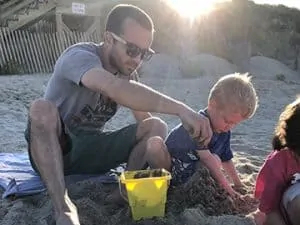
Dave is the SCS RMC Regional Manager for all states east of the Mississippi. His responsibilities include developing and implementing RMC technologies for use in environmental control systems. These systems, such as cloud-based SCADA, help private industry and municipalities achieve their environmental goals, protect workers, and help minimize operational costs.
Dave is a leader in applied technology for the waste industry – he listens to his clients’ concerns and goals, keeping his solutions focused on their needs. Respected by his clients, peers, and SCS co-workers, he delivers sustainable solutions that balance the clients’ need to provide services and products while protecting our environment.
Young himself, he embraces the SCS culture of dedicating himself to developing other young engineers into future leaders like himself and sharing his knowledge for the betterment of industries and the environment.
Well done!
Proposed Amendments to the Coal Ash Regulations, Public Hearing Registration Open
EPA is proposing further amendments to the regulations governing the disposal of coal combustion residuals, commonly known as coal ash.
The proposal addresses two issues remanded by the courts back to EPA for action. EPA is proposing a modification to one of the criteria used to determine if coal ash is being beneficially used or would be considered disposal. The second proposed change is to the requirements for managing piles of coal ash. Other proposed changes include revisions to enhance public access to information.
In addition to accepting written comments on this proposal, EPA is holding two public hearings – one in person in Arlington, Virginia on October 2, 2019, and a second one that will be held virtually.
To learn more about this proposal and the public hearings, learn how to comment and register to speak or observe, visit: https://www.epa.gov/coalash/coal-ash-rule#July2019proposal.
Upcoming e-Manifest Fiscal Years 2020-2021 User Fees
EPA announced the new e-Manifest user fees for fiscal years 2020-2021 (October 1, 2019-September 30, 2021). These user fees are set based on the manifest usage and processing costs for each manifest type.
EPA encourages the hazardous waste industry to adopt fully-electronic manifesting as soon as possible so that industry members can take maximum advantage of the benefits and cost savings of electronic manifesting. However, EPA acknowledges that it will take time for industries and receiving facilities to fully transition to electronic manifests. EPA supports the wide adoption of electronic manifesting by the regulated community as soon as it is feasible.
For more information and to view the new user fees, visit https://www.epa.gov/e-manifest/e-manifest-user-fees-and-payment-information#2020fees.
Comment Period Open for Comprehensive Environmental Response, Compensation, and Liability Act (CERCLA) 108(b) Electric Power Industry Proposal
EPA is seeking public comment on a proposed rule not imposing financial responsibility requirements under CERCLA Section 108(b) for Electric Power Generation, Transportation, and Distribution facilities.
The comment period for the proposed changes is open for 60 days, through September 27, 2019. To learn more, view the proposal, and how to submit comments visit: https://www.epa.gov/superfund/proposed-action-financial-responsibility-requirements-under-cercla-section-108b-classes.
Incremental Sampling Methodology (ISM) at PCB Cleanup Sites
ISM has been shown to be a valid and effective method for determining the concentrations of contaminants, including PCBs, in heterogeneous soils when designed appropriately. This document has a brief description of ISM and provides EPA’s policy of reviewing and approving site-specific applications to use ISM at PCB cleanup sites: https://www.epa.gov/pcbs/incremental-sampling-methodology-ism-pcb-cleanup-sites.
New and Updated Pharmaceutical Frequent Questions Posted
EPA recently updated several frequent questions about the final rule establishing management standards for hazardous waste pharmaceuticals and amending the P075 listing for nicotine. Additionally, EPA added a section about the sewer ban, which was effective August 21, 2019.
Check out the frequent questions out here: https://www.epa.gov/hwgenerators/frequent-questions-about-management-standards-hazardous-waste-pharmaceuticals-and.
Use these EPA resources to learn more, or contact SCS at and we’ll help answer your questions.
ISWA, a worldwide organization, promotes and develops professional waste management to protect human health and the environment as well as to ensure sustainable resource management.
The International Solid Waste Association (ISWA) General Secretariat announced the reelection of James Law for a second term as a board member representing the Organization Members of ISWA. His second term begins on October 6, at the ISWA General Assembly held during the 2019 World Congress in Bilbao, Spain. He is currently the Chair of the ISWA Working Group on Landfill and the Task Force on Closing Dumpsites Initiative as well.
Mr. Law has been a member of ISWA for 11 years. He became active after attending a World Congress conference in Singapore as a presenter and a trainer at the Landfill training workshop on how to use HELP modeling. “I love to attend and network at the annual World Congress, it is such a rewarding and educational experience with the world top experts in waste management and sustainability,” said Law.
James Law, PE, BCEE, LEED AP BD+C, SC, IWM, and SCS Engineers’ National Expert for Geotechnical and Landfill Engineering, has over three decades of engineering and management experience in geotechnical engineering and subsurface soil investigation – exploration programs (including landfill slope stability, embankment and MSE Wall evaluations), solid waste management, landfill engineering, and closure design. Mr. Law’s solid waste management experience also includes landfill gas collection and utilization as alternate energy expertise.
He has a commendable public-service record and contributes widely and regularly to industry associations and non-profits holding the International Status certification as an International Waste Manager by ISWA. James Law is recognized globally for his work toward the remediation and closure of open dumps; imperative to mitigate the impact on the environment and adverse effects on public health.
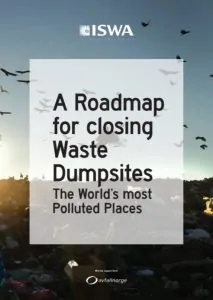
Law regularly speaks and publishes papers at national and international conferences, as well as serving on the Editorial Board for the ISWA WM&R publication as a reviewer and author. His recent editorial article on “ISWA’s Closing Dumpsites Initiative: Status of Progress” co-authored with Dave Ross was published in the 2019 WM&R publication, Volume 37 (6).
In August 2019, SCS Energy broke ground on construction of a 4,000-scfm landfill gas to renewable natural gas (RNG) plant in Indianapolis. Indy High Btu, LLC engaged SCS Energy to build the RNG plant under an engineer/procure/construct (EPC) agreement. Indy High Btu, LLC is jointly owned by Kinetrex Energy, Southside Landfill, and EDL Energy.
The RNG plant employs an iron redox scrubber for hydrogen sulfide removal, membranes for carbon dioxide removal and pressure swing adsorption for nitrogen removal. The plant is on schedule to achieve commercial operation in February 2020.
Kinetrex, as a major distributor of LNG, intends to convert the RNG into LNG. RNG from the plant will fuel trucks replacing nearly 8 million gallons of diesel a year. RNG is less expensive than diesel and significantly reduces the emission of methane and other greenhouse gases.
The Indy High Btu RNG plant is the third landfill gas-to-RNG plant designed by SCS to employ nitrogen removal, meeting pipeline specifications and maximizing gas recovery. Two other plants, including a 5,000-scfm project in Kentucky, which commenced operation in March 2018, and a 5,000-scfm project in Texas, which is currently under construction and scheduled to begin operations in November 2019, are both SCS Energy designs.
SCS Energy is a practice of SCS Engineers specializing in Biogas, Anaerobic Digestion, Renewable Natural Gas and Energy Systems for industrial and agricultural operations.
An SCS Advice from the Field blog.
Self-priming pumps can provide excellent performance in the design of a landfill leachate removal system. Landfill owners and operators prefer them to help control construction and maintenance costs too.
A typical system for removing leachate from landfill disposal cells is to have a collection point (sump) inside the lined area of the disposal cell at the toe of the landfill perimeter berm slope with large riser pipes extended from the top of the berm to the bottom of the sump. Removal of leachate from the sump takes place by placing specialized submersible pumps inside the large riser pipes with electric controls for ON-OFF switches inside the control panel of the pumps located at the top of the landfill perimeter berm. The pumps are equipped with wheels that roll down the riser pipe and are positioned in the horizontal portion of the riser pipe at the bottom of the sump. The discharge line from the pump extends up through the riser pipe, and after exiting the riser pipe at the top of the berm, connects to a leachate force main in the perimeter berm. Leachate in the sump flows into the riser pipe through perforations in the riser pipe and reaches the intake of the submersible pump for removal from the sump.
Maintenance of such submersible pumps is not easy; the entire pump assembly including the power cable connected to the pump, level control leads, discharge line, and the pump is taken out of the riser pipe to have access to the pump. Normally, the entire pump assembly is soiled with leachate and slime sticking to the pipes, lines, and the pump while submerged in leachate. The discharge line could be a 2-inch diameter solid HDPE pipe long enough to reach the sump bottom from the top of the perimeter berm. Depending on the depth of the landfill from the top of the perimeter berm, the discharge lines could be long; which means the technician has to handle the extraction of a long and heavy pipe connected to a heavy pump at the lower end of the pipe, out of the rise pipe. Technicians handling the maintenance of the submersible leachate pumps must be well trained about safety aspects of the activities involved in the maintenance of such pumps. The structure located at the top of the berm, where the riser pipes and leachate piping are located, should be watertight to prevent liquids generated during maintenance activities from escaping into the berm structure and entering the environment. It is a safe practice to have more than one technician attempting to remove a submersible pump for maintenance purposes.
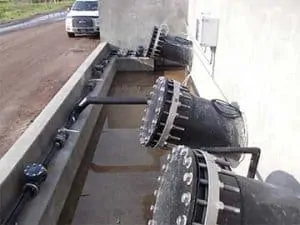
For landfills with depth to the bottom of the disposal cell less than the water column vacuum pressure (for practical purposes less than 15 ft.), self-priming pumps may be a feasible replacement for specialized submersible pumps. Self-priming pumps are not specialized pumps, come in all sizes, are much less expensive than the submersible pumps, and can easily be installed inside the structure at the top of the perimeter berm with a 2-inch line extended to the bottom of the riser pipe for leachate removal. Maintenance of such pumps is significantly less cumbersome than submersible pumps, with one technician able to handle replacement or maintenance of the pump in a much shorter period than that of a submersible pump. The work is not necessarily a dirty job where the technician has to handle a significant amount of leachate and slime. For maintenance of the pump, the 2-inch diameter pipe inside the riser pipe for removal of leachate does not need to be extracted. The self-priming pumps are normally designed to prime easily after each maintenance session. A check valve on the intake of the pump and a check valve near the bottom of the removal pipe prevents the liquid inside the pump and the removal pipe from flowing back down to the sump when the pump goes OFF, which prevents the need for priming the pump on the next ON cycle. The leachate level control can be a bubbler system installed inside the pump control panel with the air hosing extended to the bottom of the riser pipe. The initial setting of the bubbler system allows to control ON and OFF levels of the pump.
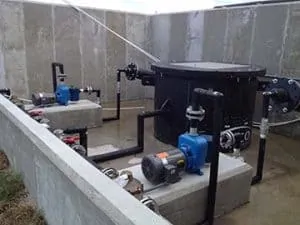
Self-priming pumps could also be used for double lining systems equipped with a secondary sump and a primary sump. A secondary pump removes liquids from the secondary sump and a primary pump removes leachate from the primary sump. In areas where freezing conditions during the wintertime are expected, self-priming pumps can also be used as long as the pumps and exposed piping are located inside an enclosed housing to prevent frost.

Liquids Management and Landfill Design
The updates to air regulations intend to remove redundant requirements and reduce compliance burdens where environmentally appropriate.
The U.S. Environmental Protection Agency (EPA) proposed updates to the oil and natural gas industry national standards. The proposal intends to remove regulatory duplication while maintaining health and environmental regulations on oil and gas sources that the agency considers appropriate. The proposal is the result of EPA’s review of the 2016 New Source Performance Standards (NSPS) for the oil and natural gas (O&G) industry conducted in response to Executive Order 13783 – Promoting Energy Independence and Economic Growth. The goal was to review existing regulations that could potentially “burden the development or use of domestically produced energy resources,” including oil and natural gas.
The resulting regulatory impact analysis from EPA estimates that the proposed amendments could save the O&G industry $17-$19 million a year, for a total of $97-$123 million from 2019 through 2025.
“EPA’s proposal delivers on President Trump’s executive order and removes unnecessary and duplicative regulatory burdens from the oil and gas industry,” said EPA Administrator Andrew Wheeler. “The Trump Administration recognizes that methane is valuable, and the industry has an incentive to minimize leaks and maximize its use. Since 1990, natural gas production in the United States has almost doubled while methane emissions across the natural gas industry have fallen by nearly 15%. Our regulations should not stifle this innovation and progress.”
In its primary proposal, the agency is proposing to remove sources in the transmission and storage segment of the O&G industry from regulation. These sources include transmission compressor stations, pneumatic controllers, and underground storage vessels. The agency is proposing that the addition of these sources to the 2016 rule was not appropriate, noting that the agency did not make a separate finding to determine that the emissions from the transmission and storage segment of the industry cause or significantly contribute to air pollution that may endanger public health or welfare.
The primary proposal also would rescind emissions limits for methane, from the production and processing segments of the industry; keeping emissions limits for ozone-forming volatile organic compounds (VOCs). These sources include well completions, pneumatic pumps, pneumatic controllers, gathering and boosting compressors, natural gas processing plants and storage tanks. The controls to reduce VOCs emissions also reduce methane at the same time, so separate methane limitations for that segment of the industry are redundant.
In an alternative proposal, EPA would rescind the methane emissions limitations without removing from regulation any sources from the transmission and storage segment of the industry.
The agency also is seeking comment on alternative interpretations of EPA’s legal authority to regulate pollutants under section 111(b)(1)(A) of the Clean Air Act.
This proposal is in addition to a September 2018 technical action that proposed targeted improvements to help streamline implementation, reduce duplication of EPA and state requirements, and significantly decrease unnecessary burdens on domestic energy producers. EPA is currently reviewing comments received on that technical package and expects to issue a final rule in the upcoming months.
EPA will take comment on the proposal for 60 days after its publication in the Federal Register, and will hold a public hearing. EPA will announce details of the hearing shortly.
More information, including a pre-publication version of the Federal Register notice and a fact sheet, is available at https://www.epa.gov/controlling-air-pollution-oil-and-natural-gas-industry
Link to the proposal: https://www.epa.gov/sites/production/files/2019-08/documents/frn_oil_and_gas_review_2060-at90_nprm_20190828revised_d.pdf
Link to fact sheet:
Air Monitoring at SCS Engineers / O&G Services
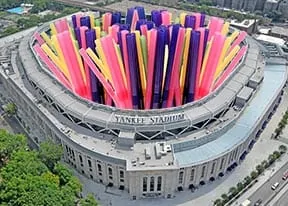
Do you really need to use a drinking straw? With most beverages, probably not! Make this one change and help America reduce the amount of plastic going into our landfills.
Click to learn more about Sustainable Materials Management.
The initiative to optimize the residential waste and recycling collection system for current and future operations exemplifies the County’s commitment to safe, efficient, and excellent civic services for residents.
The County of Sacramento, Department of Waste Management & Recycling (DWMR) is contracting with SCS Engineers to study and analyze how to optimize the routing, collection, and disposal of municipal solid waste, green waste, organics, and single-stream recycling in the unincorporated area of the county. The analyses will help Sacramento control costs, provide quality services to residents, and lower their carbon footprint.
Using a three-cart system, the DWMR provides weekly residential garbage collection, every other week recycling, green waste collection, and other waste collection services to approximately 155,000 residents in unincorporated Sacramento County.
Currently, vehicles cover 71 routes and collect a total of 151,000 tons of municipal solid waste, 77,000 tons of green waste and organics, and nearly 37, 000 tons of single-stream recycling annually. Materials go to appropriate locations, including the county-owned and operated North Area Recovery Station and the Waste Management owned and operated Sacramento Recycling Center and Transfer Station.
Approximately 60 percent of residential collection activity occurs in the northern half of unincorporated Sacramento County and 40 percent in the southern half. DWMR will use SCS Engineers’ comprehensive analyses and the current residential waste collection and disposal operations to identify options for charting a path forward that will optimize collection efficiencies and reduce collection costs. The analyses examine these areas, as follows:
Regulatory compliance, including comprehensive, cost-effective adherence to all applicable known and anticipated regulations and ordinances
Financial and contractual controls, such as long-term agreements with haulers, processors, contractors, key suppliers, and vendors; infrastructure maintenance and construction
Route logistics and vehicle controls, for example, the number of routes, type of vehicles, safety, carbon footprint reductions, workloads
Community satisfaction with clear communications, ease of disposal, overall convenience, and other factors to continuously improve residential service
The SCS analyses include a model for creating alternative collection scenarios for waste and recycling operations and performing cost modeling. The model gives the County the benefit of insight into many potential options while considering various technology, best practices of the operations staff and fleet crews, and rate structures. The SCS model is in use in cities and counties across the U.S.
“The data and the way it is analyzed and interpreted will lay the foundation for collecting waste and recycling in the unincorporated area of the County,” stated Tracie Bills of SCS Engineers. “The cost savings and environmental benefits are significant supporting Sacramento residents into the future.”
This proposed MSW Landfills Federal Plan includes the same elements as required for a state plan: identification of legal authority and mechanisms for implementation; inventory of designated facilities; emissions inventory; emission limits; compliance schedules; a process for the EPA or state review of design plans for site-specific gas collection and control systems (GCCS); testing, monitoring, reporting and record-keeping requirements; public hearing requirements; and progress reporting requirements. Additionally, this action summarizes implementation and delegation of authority of the MSW Landfills Federal Plan.
This proposed action addresses existing MSW landfills and associated solid waste management programs. For the purpose of this regulation, existing MSW landfills are those that accepted waste after November 8, 1987, and commenced construction on or before July 17, 2014.
Tables 1 and 2 in the publication list the associated regulated industrial source categories that are the subject of this action and the status of state plans. The EPA tables are not intended to be exhaustive but do provide a guide for readers regarding the entities that this proposed action is likely to affect. The proposed standards, once promulgated, will be directly applicable to the designated facilities.
The document contains the full text and how/when to comment or appear at the public hearing. Feel free to share this document or page with others using the icons at left.